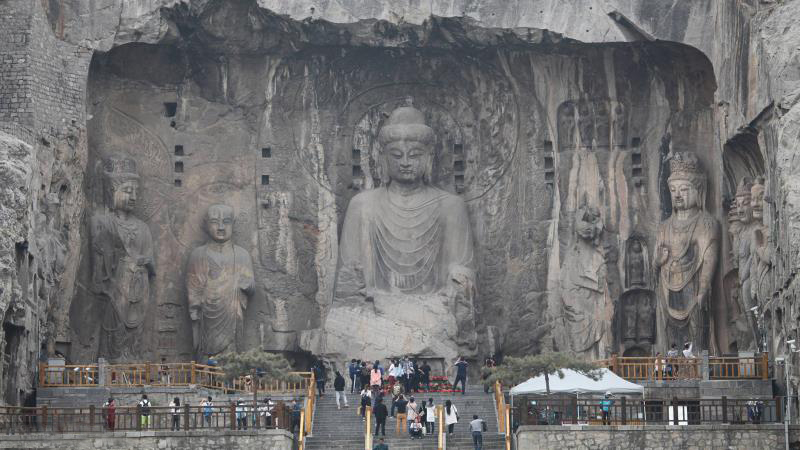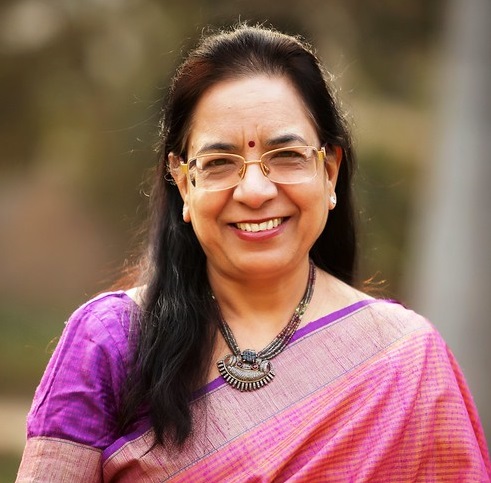The Prime Minister of India, Sh. Narendra Modi and the President of China, Mr. Xi Jinping, meeting in Mahabalipuram exchanged mechanism for shaping future, unveiling dreams, deepening and strengthening relations, forging partnerships, establishing peace and prosperity with a collective approach. They have opened fresh avenues of cooperation, friendship and harmony following the ideals of life passed on to us by the sages looking at the world as one family and wishing well being for all. Hand-shake by the two leaders will unite hearts and minds for the benefit of both the great nations. And on the other hand, it inspires us to revisit the past, the three millennia of culture and commerce, devoid of clashes or hegemonic attitudes, sharing the message of the Buddha. It will result in an impact on development of the entire humanity.
Navigation
‘The deeper the roots the higher the branches’, an old saying, is appropriate for understanding the depth and height of relations between the two great nations of Asia. The depth of the roots of Indo-Chinese cultural and commercial relations, seen in time and space is an indicator of its future. Both the nations were navigating the oceans, carrying cargo and passengers, traders and monks, commodities and sutras; they were sharing naval architecture. Oceanic navigation is referred to in Indian literary sources including Jatakamala describing observation of prevailing winds, landmarks, fauna and tides.
Missions
Mahabalipuram was a busy port under the Pallavas in the 7th century AD. Mariners were guided by lighting fire on rocks. A lighthouse was built there in around 640 AD by King Mahendra. A Chinese chronicle, Pan Ku, describes Han trade with the South seas which goes back to 1st century BC. Kanchi was pronounced as Haung Chih in China. The Minister of Wang Mang (Yaun Shih period 1st to 6th Century) sent presents to the King of Kanchi requesting him to send an embassy with a rhinoceros. This tribute was repeated in 84 and 94 AC. Four Chola missions reached China in 11th century and presented pearls, ivory, incense and perfumes to the emperor. The history of Song dynasty records the Chola envoys who arrived in the Chinese palace and offered flowers and pearls to the Emperor following the Tamil etiquettes.
Pilgrims
Fah Hsien, a Chinese pilgrim, while returning to China traveled from Tamralipti to Sri Lanka, then to Sumatra, and finally reached China. The ships that he used had the capacity of 200 hundred passengers with 50 days’ supply. There is a history of many other monks travelling via sea route. It-Sing sailed from and Canton reached Tamralipti via Srivijaya, Malayu and Kedah. Reflections of this history in arts is fascinating. The largest ship in cave 55 at Dunhuang is painted as a ship of Dharma sailing from the shores illusion to the paradise of Amitabha. Others are in caves 45 and 323 carrying Buddhist images belonging to Emperor Ashoka. Ajanta also has preserved such frescoes. Borobudur in Indonesia also has seven ships sculpted on its walls.
Commerce
A Chinese work – Han Shu in the record of geography states about trade between south India and China in the second century BCE. Bright pearls, jewels, rare stones, exotic items were exchanging hands. Han dynasty coins unearthed from south India are silently witnessing the trade relations. The Biography of the Western Regions in Han Shu records coins and products of India - grains and grapes, techniques of building palaces, art of weaving wool fabric, carving, and embroidery etc. Sea-shells from the Bay of Bengal unearthed in Sichuan and Yunnan were used as currency. A three thousand years old piece of Indian cotton cloth discovered at Fujian is its earliest specimen. Arthashastra by Kautilya, Ramayana and Mahabharata refer to silk. Chinese products from Sichuan traveled to Bactria via India. Chinese ceramics were in great demand, highly appreciated in India and Sri Lanka. The presence of Chinese merchants in South India is attested by 838 Chinese coins found in Tanjore district of Tamil Nadu dating from the Han dynasty (114-119) to the Hsien-Hsun period of the Sung dynasty (1265-1275). A Chinese pagoda was built at Nagapattinam in 1267 AD.
Bodhidharma=Damo – A Symbol of Indo-Chinese Friendship
Bodhidharma and Prince of Kanchi, Tamil Nadu, disseminated the knowledge of Dhyana and martial arts to China. Dhyana is known as Ch’an. The monk Bodhidharma is famous as Damo. The Shaolin monastery where Chan was established by Bodhidharma retains his legacy. He had meditated there for nine years. With unimaginable knowledge and practice he became a legendry figure in China. Damo taught people to have peace within by being introvert through mediation. He transmitted the knowledge of Kalaripayattu. Its roots go as far as Vedas. It is a wonderful combination of quietness, vigor, spirituality, motion, balance and transcendence. Today it is one of the best known training for self-defense practiced by people of all strata.
A book discovered from the Shaolin temple written in 1851-61 indicates continuity of the practice of Yoga from the time of Bodhidharma. It has a verse expounding the main points integrating Buddhist and Taoist practices. It shows twelve posture for tandem strengthening, marrow purification, enhancing inner power, receiving solar and lunar energy, and practicing skills. All the twenty-one parts of the book are one of the best examples of long lived friendship between people of the two nations. Revisiting Indian and Chinese modes of better health, both mental and physical can be a step forward for enhancing harmony.
Music
Around 340 kilometers from Mahabalipuram, a stele discovered from Kudumiyanmalai village in Pudukkottai area, bears a 7th century inscription in Pallava script, about music especially the sever notations called sapta svaras. It is identified as ‘seven melody stele’ by the Chinese music academia. The Music Collections of Sui and Wei books refer to the seven notes. Chinese records say that there was a Brahmana lute teacher in China. Another teacher was Sujiva from the royal family of Kucha who taught the seven keys of music that can be traced back to India. Emperor Wu-Ti sent Chang Ch’ien to the west in 138 BC to bring Indian musical instruments and melodies from Kucha. Son-in-law of the Emperor wrote twenty-eight new tunes based on the melody—Mo-ho-tou-le. The tunes were played as military music. The Chinese General Protector, Lu Kuang carried groups of performers—actors, musicians and dancers to China as war booty in AD 382. This resulted in popularity of Indian music in China. The Indian goddess of music, Sarasvati was also worshipped in Central Asia.
Folk Customs
Since mid10th century two Chinese books record Indian folk customs that traveled along the northern route which increased with trade. They talk about the customs of the Cholas in Tamil Nadu- the people, their ways of living and draping. The brahamans believed that they are descendants of the Buddha, how they worshipped Him in household shrines, how cow dung was applied to them and incense was burnt, flowers were offered.
Temples in Fujian
The ruling class in China nurtured a noble quest for happiness in the world. They built innumerable temples, stupas and monasteries; enshrined innumerable divine images, painted the interior walls of cave temples that run into kilometers. Temple culture was woven into monastic system; power was combined with virtue; they preserved the ideals of universalism and saintliness; supported monks, and even appointed many as rajagurus . Their capitals like Xian, Nanjing, Beijing abounded in divine spaces. Fujian also is a city where Nanshang temple was built by Emperor Xuanzong of T’ang dynasty, completed in 736 CE. It was repaired by the Emperor Taizu of Song in 968. It has a Hall for Divine Guardian Kings, Mahavira Hall, library for sacred scriptures, and monastic space. Tian Cheng temple was built much later in 1707. It is still a living heritage of China. The monasteries resound with chants by the devotees, perfumed by incense offered by them, and nature further adds to their beauty and tranquility.
Kanchi to Canton
Kanchipuram is around 66 km from Mamallapuram. Tamil Nadu remained a great centre of arts and culture. The Chinese historical records, dynastic histories, travelogues, and other documents substantiate it. The history of exchanges of art and culture between Kanchi to Canton has been unbroken and the most brilliant, and will remain so for centuries to come, for peace and harmony, where beauty and wisdom prevail. Its core is Buddhism which has contributed immensely towards advancement of civilizations and will continue to do so in future.
(The paper is the author’s individual scholastic articulation. The author certifies that the article/paper is original in content, unpublished and it has not been submitted for publication/web upload elsewhere, and that the facts and figures quoted are duly referenced, as needed, and are believed to be correct). (The paper does not necessarily represent the organisational stance... More >>
Image Source: https://news.cgtn.com/news/3d3d414e776b444e7a457a6333566d54/img/a17b8066f3984bffac9471f48c7307fe/a17b8066f3984bffac9471f48c7307fe.jpg











Post new comment